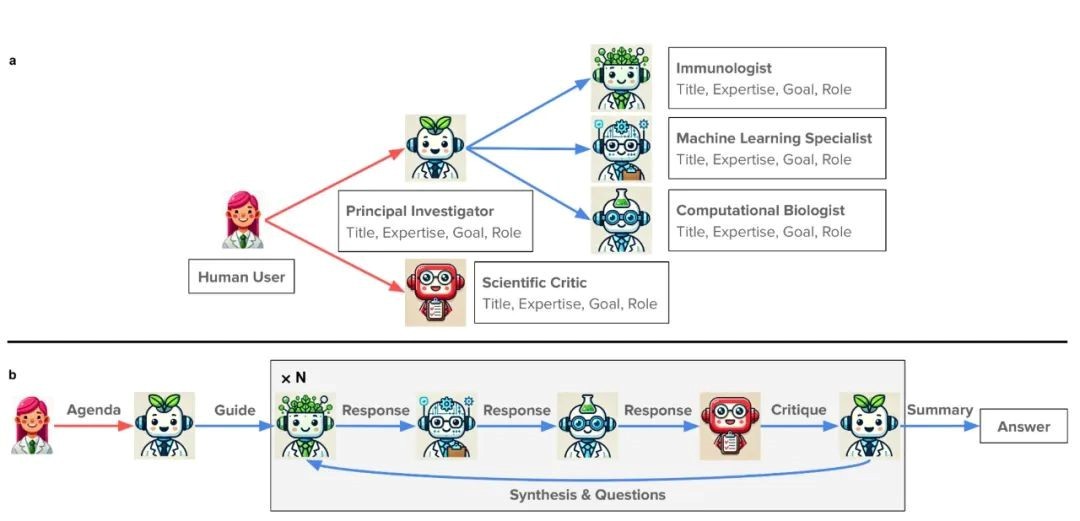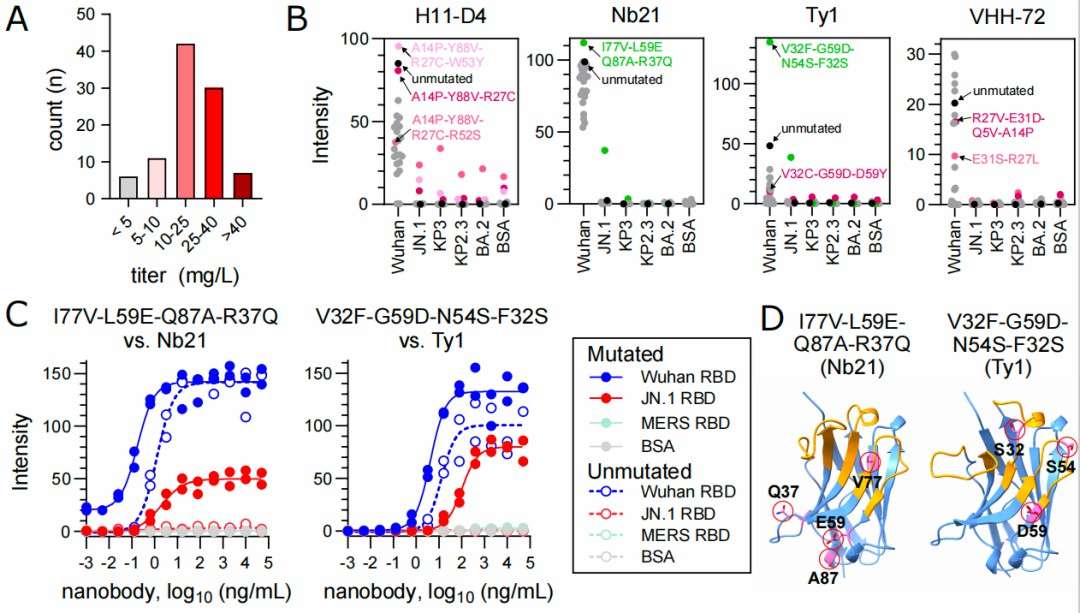Breaking News: "AI Scientists" Are Really Here!
If you're a molecular biologist launching a project to find a treatment for an emerging infectious disease, you'll need not only the expertise of virologists and immunologists, but also bioinformatics experts to help analyze the data and draw conclusions.
However, what if you lack the resources or connections to assemble a large, multidisciplinary team?
Researchers at Stanford University and the Chan Zuckerberg Biohub have now proposed a novel solution to this dilemma: an AI-powered Virtual Lab. Comprised of a team of "AI scientists" (AI agents) with diverse disciplinary expertise, this Virtual Lab is capable of addressing complex, open-ended scientific questions by developing, refining, and executing sophisticated research strategies. These "AI scientists" can even conduct virtual experiments whose results can be validated in real-world labs.
 Fig. 1. Social dynamics among the Virtual Lab agents.
Fig. 1. Social dynamics among the Virtual Lab agents.
A human scientist simply formulates a scientific question and oversees meetings where a "Principal Investigator Agent" and their team of "Scientist Agents" exchange ideas and advance the research. These AI agents are powered by large language models (LLMs), endowed with scientific reasoning and decision-making capabilities.
In addition to a "Chief Scientist Agent" and "Scientist Agents" (immunologists, machine learning experts, and computational biologists), the Virtual Lab platform also includes a "Scientific Critic Agent," a generalist tasked with asking probing questions and injecting a dose of skepticism into the process. This "Scientific Critic Agent" is crucial in mitigating AI illusions.
It is important to note that while human scientists participated in meetings convened by these AI Agents and provided guidance at critical moments, their contributions accounted for only approximately 1% of all conversations. The AI Agents conducted the vast majority of discussions, decisions, and analyses independently.
Next, the research team used the Virtual Lab platform to investigate a pressing problem: designing antibodies or nanobodies that bind to the spike protein (S protein) of the novel coronavirus (SARS-CoV-2) variant.
 Fig. 2. Two new nanobodies exhibit improved binding to the recent JN.1 or KP.3 variants.
Fig. 2. Two new nanobodies exhibit improved binding to the recent JN.1 or KP.3 variants.
In just a few days, the Virtual Lab designed and implemented an innovative computational pipeline, generating 92 novel nanobodies, two of which were shown in experimental validation to bind to the S protein of the novel coronavirus variant.
John E. Pak, co-corresponding author of the paper, said, "What was once a wild science fiction is now a reality. The processes designed by these AI Agents are incredibly creative, yet also incredibly logical and rapid." Furthermore, it's striking that these AI Agents, in their interactions, can actually come up with ideas similar to those that human scientists would. He added, "There's no need to worry about AI scientists replacing human scientists. On the contrary, as collaborators, these AI scientists will only augment their work, helping to generate more ideas for laboratory testing."
James Zou, co-corresponding author of the paper, stated that this is the first demonstration that an autonomous AI Agent can truly solve a challenging scientific research problem from start to finish. This research demonstrates a new paradigm: AI isn't just a tool we use for specific steps in research; it can actually be the primary driver of the entire research process, leading to new discoveries. Furthermore, the Virtual Lab platform used in this study was designed for biomedical research problems, but it can be appropriately modified and applied to a wider range of scientific fields.
Reference
- Swanson, K., Wu, W., Bulaong, N.L. et al. "The Virtual Lab of AI agents designs new SARS-CoV-2 nanobodies." Nature (2025).

Your email address will not be published. Required fields are marked *